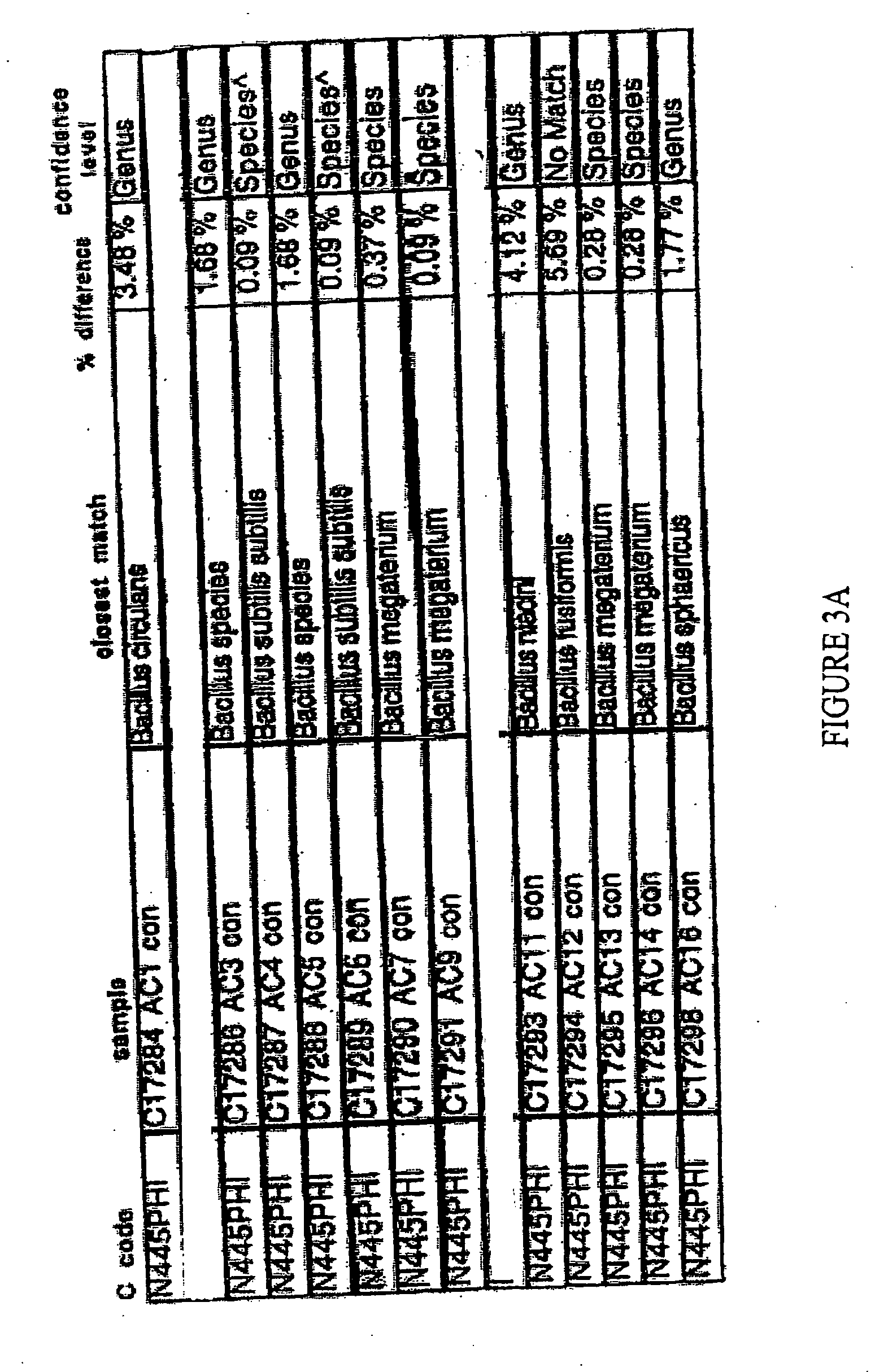Methods and compositions for improving plant growth
a technology of plant growth and composition, applied in the field of identification and isolation of plant growthstimulating microorganisms, can solve the problems of inaccessible minerals, unsuitable farming land, and further imbalance, and achieve the effects of improving the plant growth-stimulating property of soil, enhancing solar energy conversion, and increasing biodiversity in soil
- Summary
- Abstract
- Description
- Claims
- Application Information
AI Technical Summary
Benefits of technology
Problems solved by technology
Method used
Image
Examples
example i
Identification of Novel Fire-Climax Bacterial Strains in Mesquite Charcoal
[0079] Cultures were grown from mesquite wood charcoal obtained by burning mesquite wood. The charcoal fines, dust-like particles of approximately 2 mm-15 mm in diameter, were separated from the larger pieces of charcoal. Bacteria were isolated from CP-1 (a source of mesquite charcoal) fines by autoclaving 250 ml of TY agar medium in a flask for 45 minutes at 15 lb / in2, removing the medium from the autoclave, and while the temperature of the sterile agar was approximately 200° F., preparing a 2% charcoal suspension by adding 5 g of non-sterile CP1 “fines” to the 250 ml solution. The flask was swirled to mix the suspension and 20 ml of agar medium containing the charcoal was poured into each 90-mm Petri plate. Plates were cooled at room temperature, and the agar allowed to solidify. After 28 hours, bacterial and fungal colonies developed on the plates. After 72 hours, 14 bacterial colonies were picked and tran...
example ii
Identification of Novel Fire-Climax Bacterial Strains in Almond Charcoal
[0081] The 16S rDNA sequences of twenty-nine isolates from almond charcoal were examined. Of these isolates, one was identified as Brevibacillus centrosporus. Furthermore, nineteen isolates were different, eight were identified to the species level (≦1% difference), six differed from known species by 1% to greater than or equal to 5%, and three differed from known species by greater than 5%. The sequence identification tables are shown in FIGS. 3A-3C.
[0082] Partial 16S rDNA sequence analysis showed that the almond charcoal isolate designated “C17304 AC23 con” in FIG. 3B had a 0.29% difference from Brevibacillus centrosporus, similarly to HAB7. HAB7 is a bacterial strain isolated from soil, as further described in Example III. C17304 AC23 con was also found to grow in a combination of 25 mg / L spectinomycin, 1 mg / L tetracycline, and 2.5 mg / L chloramphenicol, as was HAB7.
example iii
Process for Carbonizing Douglas Fir Wood and Bark Shavings and Isolation of Fire-Climax Microbes from the Carbonized Materials
[0083] A recently felled Douglas fir tree was cut into 14″ sections. Bark tissue (i.e. phloem) and wood (i.e. xylem) were shredded separately with a 20″ chain saw and collected. The two plant tissues were mixed together in a 1:1 ratio, dried overnight at 70° C., and stored in sealed glass jars for later use.
[0084] A series of 2″ diameter ceramic crucibles were loaded with 10 g of the mixed tissues. A 240V Bamstead International muffle furnace, Model F47920-80, with programmable temperature control and a 5″(W)×4″(H)×6″(D) chamber, was used for all experiments described in this Example. This furnace, which can run at 1093° C. continuously or 1200° C. intermittently, was used to mimic forest-fire conditions. The furnace was preheated to 600° C., and individual crucibles were placed in the furnace for various periods of time. When a crucible was placed in the f...
PUM
| Property | Measurement | Unit |
|---|---|---|
| temperature | aaaaa | aaaaa |
| temperature | aaaaa | aaaaa |
| temperature | aaaaa | aaaaa |
Abstract
Description
Claims
Application Information
 Login to View More
Login to View More - R&D
- Intellectual Property
- Life Sciences
- Materials
- Tech Scout
- Unparalleled Data Quality
- Higher Quality Content
- 60% Fewer Hallucinations
Browse by: Latest US Patents, China's latest patents, Technical Efficacy Thesaurus, Application Domain, Technology Topic, Popular Technical Reports.
© 2025 PatSnap. All rights reserved.Legal|Privacy policy|Modern Slavery Act Transparency Statement|Sitemap|About US| Contact US: help@patsnap.com



